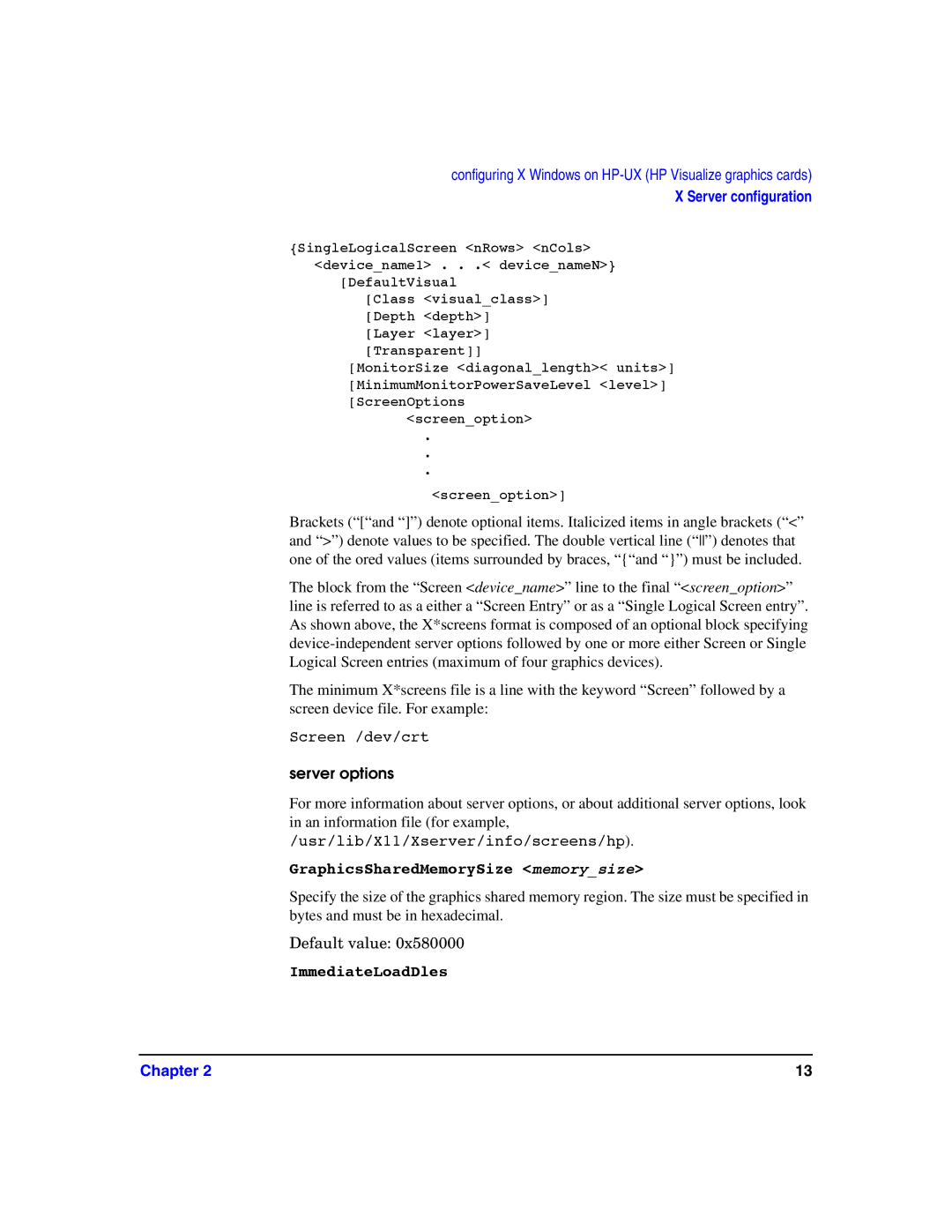configuring X Windows on HP-UX (HP Visualize graphics cards)
X Server configuration
{SingleLogicalScreen <nRows> <nCols> <device_name1> . . .< device_nameN>}
[DefaultVisual
[Class <visual_class>] [Depth <depth>] [Layer <layer>] [Transparent]]
[MonitorSize <diagonal_length>< units>] [MinimumMonitorPowerSaveLevel <level>] [ScreenOptions
<screen_option>
.
.
.
<screen_option>]
Brackets (“[“and “]”) denote optional items. Italicized items in angle brackets (“<” and “>”) denote values to be specified. The double vertical line (“”) denotes that one of the ored values (items surrounded by braces, “{“and “}”) must be included.
The block from the “Screen <device_name>” line to the final “<screen_option>” line is referred to as a either a “Screen Entry” or as a “Single Logical Screen entry”. As shown above, the X*screens format is composed of an optional block specifying
The minimum X*screens file is a line with the keyword “Screen” followed by a screen device file. For example:
Screen /dev/crt
server options
For more information about server options, or about additional server options, look in an information file (for example, /usr/lib/X11/Xserver/info/screens/hp).
GraphicsSharedMemorySize <memory_size>
Specify the size of the graphics shared memory region. The size must be specified in bytes and must be in hexadecimal.
Default value: 0x580000
ImmediateLoadDles
Chapter 2 | 13 |
